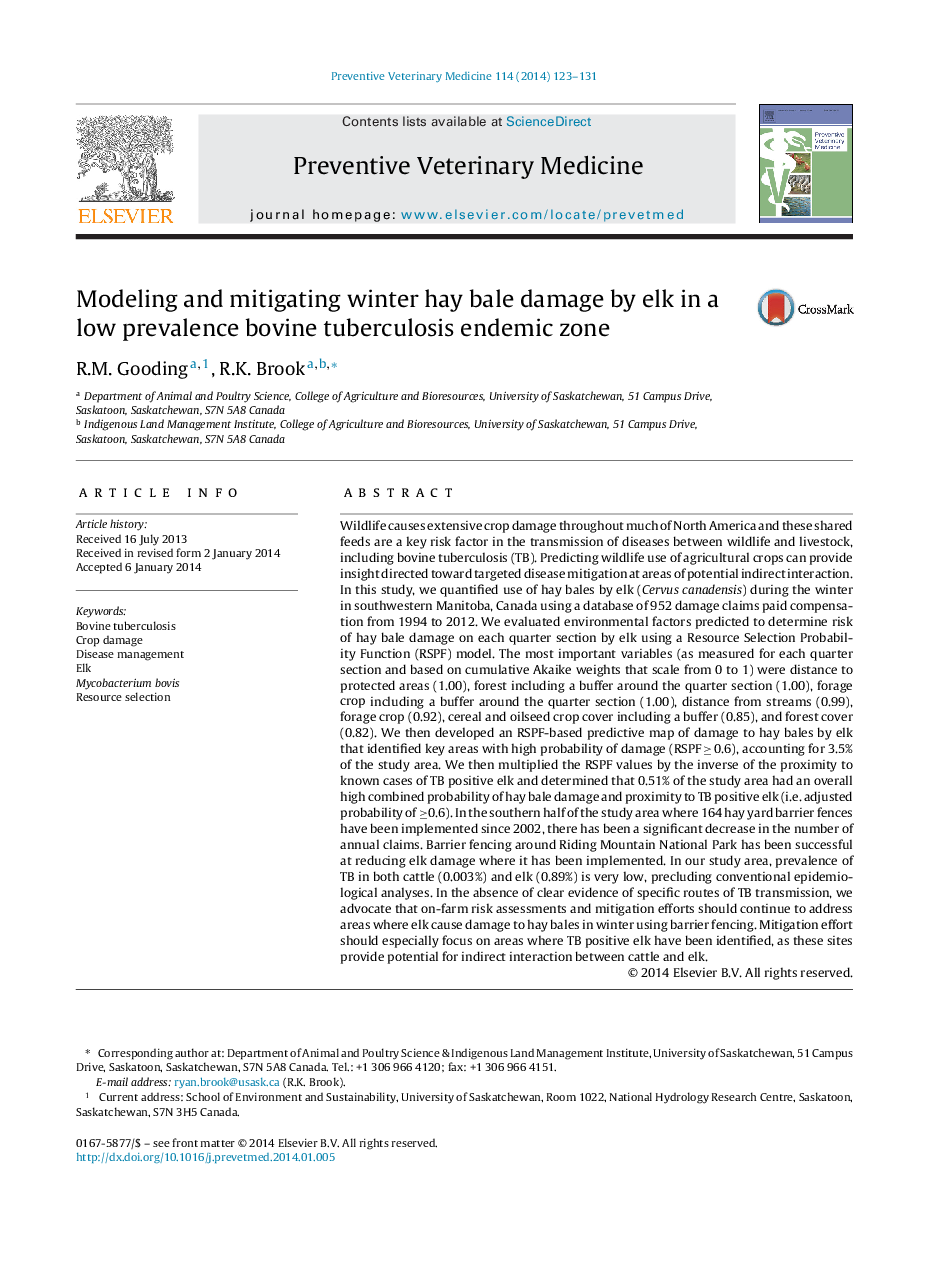| Article ID | Journal | Published Year | Pages | File Type |
|---|---|---|---|---|
| 5793308 | Preventive Veterinary Medicine | 2014 | 9 Pages |
Wildlife causes extensive crop damage throughout much of North America and these shared feeds are a key risk factor in the transmission of diseases between wildlife and livestock, including bovine tuberculosis (TB). Predicting wildlife use of agricultural crops can provide insight directed toward targeted disease mitigation at areas of potential indirect interaction. In this study, we quantified use of hay bales by elk (Cervus canadensis) during the winter in southwestern Manitoba, Canada using a database of 952 damage claims paid compensation from 1994 to 2012. We evaluated environmental factors predicted to determine risk of hay bale damage on each quarter section by elk using a Resource Selection Probability Function (RSPF) model. The most important variables (as measured for each quarter section and based on cumulative Akaike weights that scale from 0 to 1) were distance to protected areas (1.00), forest including a buffer around the quarter section (1.00), forage crop including a buffer around the quarter section (1.00), distance from streams (0.99), forage crop (0.92), cereal and oilseed crop cover including a buffer (0.85), and forest cover (0.82). We then developed an RSPF-based predictive map of damage to hay bales by elk that identified key areas with high probability of damage (RSPF â¥Â 0.6), accounting for 3.5% of the study area. We then multiplied the RSPF values by the inverse of the proximity to known cases of TB positive elk and determined that 0.51% of the study area had an overall high combined probability of hay bale damage and proximity to TB positive elk (i.e. adjusted probability of â¥0.6). In the southern half of the study area where 164 hay yard barrier fences have been implemented since 2002, there has been a significant decrease in the number of annual claims. Barrier fencing around Riding Mountain National Park has been successful at reducing elk damage where it has been implemented. In our study area, prevalence of TB in both cattle (0.003%) and elk (0.89%) is very low, precluding conventional epidemiological analyses. In the absence of clear evidence of specific routes of TB transmission, we advocate that on-farm risk assessments and mitigation efforts should continue to address areas where elk cause damage to hay bales in winter using barrier fencing. Mitigation effort should especially focus on areas where TB positive elk have been identified, as these sites provide potential for indirect interaction between cattle and elk.
